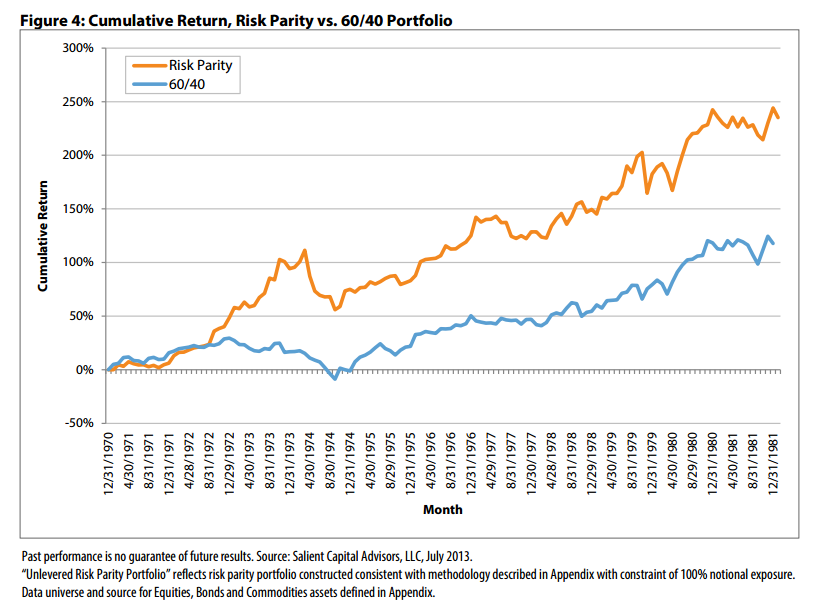Risk Parity in a Rising Rates Regime
- Rob Croce, Rusty Guinn, and Lee Partridge
- A version of the paper can be found here.
- Want a summary of academic papers with alpha? Check out our free Academic Alpha Database!
Background:
We’ve had some recent commentary on the costs/benefits of risk parity based strategies:
- https://alphaarchitect.com/2013/03/which-risk-parity-based-pension-will-blow-up-first/
- https://alphaarchitect.com/2013/07/assessing-which-risk-parity-funds-blew-up/
Most of the comments have been focused on risk parity’s dependence on long bonds.
A natural question to ask is “What happens to Risk Parity when Interest Rates Rise?”
Thankfully, Rob Croce and crew give us some analysis.
Data Sources:
N/A
Alpha Highlight:
Risk parity 1970 to 1981:

The results are hypothetical results and are NOT an indicator of future results and do NOT represent returns that any investor actually attained. Indexes are unmanaged, do not reflect management or trading fees, and one cannot invest directly in an index. Additional information regarding the construction of these results is available upon request.
Seen any other analysis on risk parity?
My team at Empiritrage is putting together a very large risk parity report–stay tuned
About the Author: Wesley Gray, PhD
—
Important Disclosures
For informational and educational purposes only and should not be construed as specific investment, accounting, legal, or tax advice. Certain information is deemed to be reliable, but its accuracy and completeness cannot be guaranteed. Third party information may become outdated or otherwise superseded without notice. Neither the Securities and Exchange Commission (SEC) nor any other federal or state agency has approved, determined the accuracy, or confirmed the adequacy of this article.
The views and opinions expressed herein are those of the author and do not necessarily reflect the views of Alpha Architect, its affiliates or its employees. Our full disclosures are available here. Definitions of common statistics used in our analysis are available here (towards the bottom).
Join thousands of other readers and subscribe to our blog.

